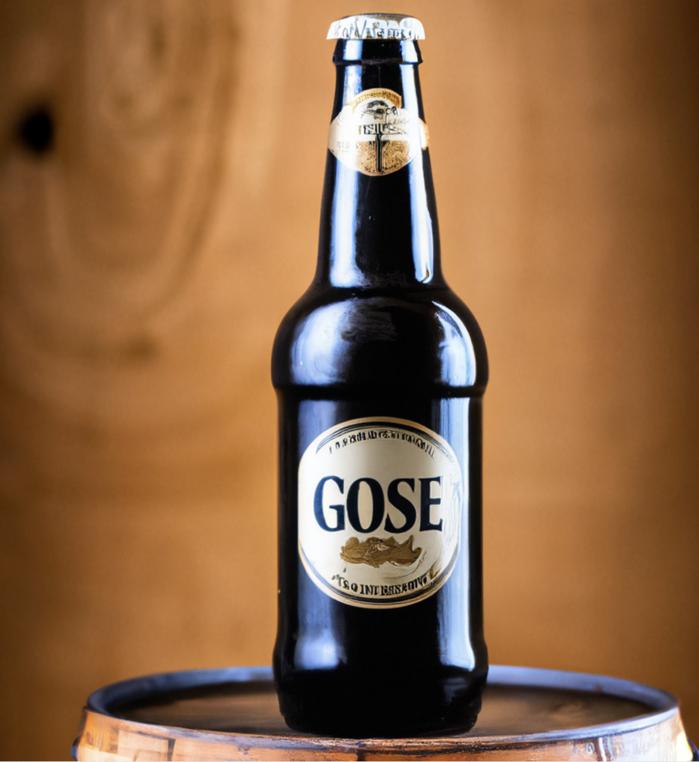Gose beer is a unique and historical style of beer, with a distinct tart and salty flavor profile that has been captivating beer lovers for centuries. But where does this unique style of beer come from? The answer to this question can be found in a small town in Germany, where the story of Gose begins.
Gose beer originates from the town of Goslar, located in Lower Saxony, Germany. The beer gets its name from the nearby Gose River, which provided the water used in the brewing process.
In this blog post, we’ll explore the fascinating history of Gose beer, its unique brewing process, and the various characteristics that make this style of beer so special. We’ll delve into the following subheadings:
1. A Brief History of Gose Beer
2. The Traditional Gose Brewing Process
3. The Role of Salt in Gose
4. The Tartness Factor: Lactic Acid Bacteria
5. Appearance and Aroma
6. Classic Gose vs. Modern Interpretations
7. Food Pairings with Gose
8. Reviving the Gose Tradition
9. Where to Find and Enjoy Gose Beer Today
1. A Brief History of Gose Beer
Gose beer has a long and storied history, dating back to the 16th century. It is believed to have been first brewed in the town of Goslar, while some sources suggest that the style may have even been introduced by the Knights Templar, who were known to have settled in the region.
In the 18th and 19th centuries, Gose beer became incredibly popular in the nearby city of Leipzig, where it was considered the local specialty.
At its height, there were reportedly over 80 Gose houses in the city, each producing their own version of the beer. However, with the rise of more modern beer styles such as Pilsner, and the devastation of World War II, the popularity of Gose waned, and by the 1960s, it had all but disappeared.
Fortunately, a handful of dedicated brewers have worked to revive this historic style in recent years, and Gose has once again found a passionate following among beer enthusiasts.
2. The Traditional Gose Brewing Process
The brewing process for Gose beer is quite unique, and sets it apart from other styles of beer. The most notable difference is the use of a large proportion of wheat malt in the grain bill, typically around 50% or more. This results in a beer with a light, refreshing body and a slightly hazy appearance.
Another key aspect of the Gose brewing process is the use of spontaneous fermentation. In the traditional method, brewers would leave the beer to cool in open vessels, allowing wild yeast and bacteria present in the air to inoculate the wort.
This would result in a complex mix of fermentation flavors, including the characteristic tartness that defines the style.
In addition to the unique fermentation process, Gose beers are also brewed with coriander and salt, which impart their own distinctive flavors to the finished product.
3. The Role of Salt in Gose
The use of salt in the brewing process is one of the defining characteristics of Gose beer. The addition of salt can be traced back to the beer’s origins in Goslar, where the water used in brewing was drawn from the mineral-rich Gose River.
This naturally salty water would impart its flavor to the beer, creating the style’s signature salty character.
Today, brewers typically add salt directly to the beer during the brewing process, in order to achieve the same effect. The salt not only contributes to the unique flavor profile of Gose, but also serves to enhance the overall mouthfeel and balance of the beer.
4. The Tartness Factor: Lactic Acid Bacteria
One of the most prominent flavor characteristics of Gose beer is its tartness, which is the result of the presence of lactic acid bacteria during fermentation.
As previously mentioned, traditional Gose beers were spontaneously fermented, allowing wild yeast and bacteria to inoculate the wort and produce a complex mix of flavors.
The lactic acid bacteria, also known as Lactobacillus, are responsible for producing the lactic acid that gives Gose its characteristic tanginess. In modern brewing, many brewers will intentionally introduce Lactobacillus into their Gose beers in order to achieve the desired tartness.
5. Appearance and Aroma
Gose beers typically have a hazy, pale yellow to golden color, due to the high percentage of wheat malt used in the brewing process.

They often have a frothy, persistent white head, which adds to their refreshing and inviting appearance.
The aroma of Gose beers is complex and intriguing, with notes of citrus, coriander, and a slight saltiness. The characteristic tartness is also present in the aroma, adding to the overall sensory experience.
6. Classic Gose vs. Modern Interpretations
While the classic Gose beer is a wonderful and unique style in its own right, many modern brewers have taken the style as a starting point and added their own creative twists.

Some popular variations include the addition of fruit, such as raspberries, cherries, or citrus, which can complement and enhance the natural tartness and saltiness of the beer.
Other brewers have experimented with barrel aging their Gose beers, which can add depth and complexity to the flavor profile. There are even examples of “Imperial” Gose beers, which have a higher alcohol content and a more robust flavor profile than the traditional style.
7. Food Pairings with Gose
The unique combination of tartness, saltiness, and refreshing effervescence makes Gose beer an excellent choice for pairing with a wide range of foods. The acidity of Gose can help to cut through the richness of fatty, creamy dishes, while the saltiness can enhance and balance the flavors of more delicate ingredients.
Some great food pairings for Gose beer include:
- Fresh seafood, such as oysters, shrimp, or ceviche
- Grilled or fried chicken
- Light salads with citrus or vinegar-based dressings
- Soft, tangy cheeses like goat cheese or feta
- Fruit-based desserts, such as sorbet or fruit tarts
8. Reviving the Gose Tradition
As previously mentioned, the Gose style experienced a significant decline in popularity throughout the 20th century, with the style all but disappearing from the beer landscape. However, recent years have seen a resurgence in interest in Gose beers, with craft brewers around the world working to revive this historic style.
In Germany, the town of Leipzig has embraced its Gose heritage, with several breweries and bars dedicated to the style. In the United States and other countries, craft brewers have also taken up the Gose mantle, producing their own interpretations of this unique and flavorful beer.
9. Where to Find and Enjoy Gose Beer Today
With the revival of the Gose style, it is now easier than ever to find and enjoy this unique beer. Many craft breweries and bars now offer Gose beers on tap or in bottles, and a growing number of breweries are producing their own versions of the style.
Some notable Gose beers to seek out include:
- Ritterguts Gose (Germany)
- Bayerischer Bahnhof Leipziger Gose (Germany)
- Westbrook Gose (USA)
- Anderson Valley Blood Orange Gose (USA)
- The Bruery Terreux Goses are Red (USA)
In conclusion, Gose beer originates from the town of Goslar in Lower Saxony, Germany, and is a unique and historic style of beer characterized by its tartness, saltiness, and refreshing drinkability.
The recent resurgence in popularity of this style has seen a wealth of new and exciting interpretations, making it an excellent time to explore and enjoy Gose beer.
Here are 10 fascinating facts about Gose beer to take away:
1. Gose beer originates from Goslar, Germany.
2. The style is named after the Gose River, which provided the mineral-rich water used in brewing.
3. Gose has a long history, dating back to at least the 16th century.
4. The beer was once incredibly popular in Leipzig, with over 80 Gose houses in the city.
5. Gose is brewed with a large proportion of wheat malt, giving it a light and hazy appearance.
6. The brewing process involves the use of spontaneous fermentation, allowing wild yeast and bacteria to inoculate the wort.
7. Salt and coriander are key ingredients in Gose, imparting unique flavors to the beer.
8. Lactic acid bacteria are responsible for the characteristic tartness of Gose.
9. The style has experienced a recent revival, with many craft brewers producing their own interpretations of Gose.
10. Gose pairs excellently with a wide range of foods, from seafood to soft cheeses.
FAQs
What style is a gose beer?
A gose beer is a sour and salty German-style beer that is brewed with coriander and often has a low alcohol content.
What other beers originated in Germany?
Many types of beer originated in Germany, including lagers, pilsners, bocks, and wheat beers. Some famous German beer brands include Oktoberfest, Weihenstephaner, and Paulaner.
Is gose style beer the same as sour?
Gose style beer is a type of sour beer, but not all sour beers are gose style. Gose beers are typically brewed with salt and coriander, giving them a unique flavor profile that sets them apart from other sour beers e.g. Lambics.
Is gose beer German?
Yes, gose beer is a German beer style that originated in the town of Goslar in the 16th century and later became popular in the city of Leipzig.




